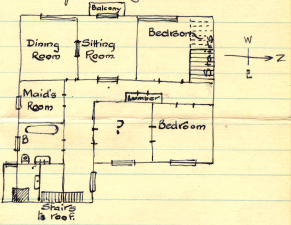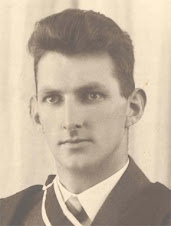A week after my arrival the Colegio opened for the second term. The library was assigned to me as my place of study and there I slogged in at Spanish morning and afternoon, whenever I was not keeping order in some class whose teacher had not turned up. This was a job I hated as my Spanish was very limited and the boys, who were naturally frisky, delighted in having as much fun as possible at my expense. There were two Perata brothers were in the fourth year High School who led me a merry dance. Although not twins they were much alike. I would take the name of one of them, which would be called out for detention at the line up before dismissal in the afternoon. The innocent one would promptly fall out while the guilty one would make a beeline for home as soon as he reached the street. The innocent Perata would then protest that he was being accused of his brothers misdeeds and promptly be released.
All young missionaries were expected to belong to the Union Church choir at that time, and I was no exception. Mary Hutcheson volunteered to take me along to the practise after school during my first week. She was an innocent little soul and had no idea at all as to what went on just around the corner from the Plaza Francia, especially in Calle Salud. She told me she knew a shortcut to Pasahe Inclan where the Lima High School for girls was situated and there the practise was to be held. So off we set walking the whole length of that infamous street, which in those days was the red light district. She was very short and was red headed and I am over six feet tall. The women came out of their dens to see this great sight and make comments, none of which I could understand. When I asked Mary what the explanation was, she did not know herself. However we reached the choir practise safely and I don’t think Mary ever did find out where she had been.
Friday, November 6, 2009
Thursday, November 5, 2009
Renting from Bevan
 |
| Floorplan as sketched in letter home |
Monday, November 2, 2009
The Artist
 Herbert was an accomplished artist. He sketched and etched from very early days. He was an enthusiastic learner and was always keen to work in new ways and new medium. He was keen on water colour and oils but did like working in pencil. Some well remembered lessons came from Herb when pulled out a carpenter’s pencil and very cleverly showed what could be done with a broad piece of pencil lead. He was once introduced to the famous New Zealand landscape painter Aston Greathead who very generously handed some of his paintings to Herb and invited him to copy them. Ever keen to keep learning and refining his technique Herb took the most of this opportunity. I am not sure if this is a copy of Aston but it does reveal some of Herb’s talent. So too this etching of the Inferniello Bridge in Peru.(via Bramwell Cook)
Herbert was an accomplished artist. He sketched and etched from very early days. He was an enthusiastic learner and was always keen to work in new ways and new medium. He was keen on water colour and oils but did like working in pencil. Some well remembered lessons came from Herb when pulled out a carpenter’s pencil and very cleverly showed what could be done with a broad piece of pencil lead. He was once introduced to the famous New Zealand landscape painter Aston Greathead who very generously handed some of his paintings to Herb and invited him to copy them. Ever keen to keep learning and refining his technique Herb took the most of this opportunity. I am not sure if this is a copy of Aston but it does reveal some of Herb’s talent. So too this etching of the Inferniello Bridge in Peru.(via Bramwell Cook)
Subscribe to:
Posts (Atom)






